|
_____________
Strategic Development
Planning
Urban Design
Architecture
Landscape
Tourism
_____________
|
|
Master Planning
Master planning is an art of balancing visionary ideas with practical implementation, which is refined through decades of international experience.
The preparation of development plans arising from city development goals and objectives can lead to the identification of priority development areas and potential growth sectors. This holistic approach to urban planning is vital to ensure the benefits of such growth are effectively harnessed.
Projects may involve the preparation of urban development plans; formulating sustainable master plans; preparing staged implementation programmes and the undertaking of feasibility studies on particular aspects of the plans including tourism and hotel development, airport related facilities and logistics sector projects.
|
King Adbullah Financial District, Riyadh, Saudi Arabia
Client: Rayadah Investment Company. |

|
|
Shankland Cox was retained by the
government of the Kingdom of Saudi
Arabia to undertake a review of the
Master Plan for the King Abdullah
Financial District (KAFD) with the
objective to establish one of the largest
Financial Centres in the region. The
review assessed the planning options
open to the Financial District and
ways to improve the plan, prepare a
parking strategy that will minimize traffic
congestion and validate the suitability of
the original Master plan to accommodate
the scale of development envisaged
and to foster the integration of the
development as one single project. |
Harbour and Waterfront Development, Hong Kong, SAR
Client: Planning Department/ Hong Kong Tourism board
|
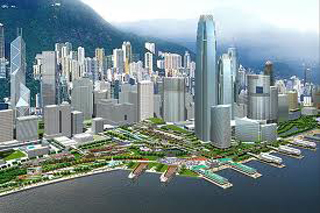
|
|
We were commissioned by the HKTB to prepare
a Harbour and Waterfront plan within the
context of the Metroplan Review undertaken
also by the firm, to guide the use of waterfront
areas and the harbour together with the
implementation framework, to prepare a tourism
plan recommending major tourism development
components for the different areas of the
waterfront and to prepare Action Area Plans
for selected areas indicating priority, scale and
types of actions required. |
Tung Chung New Town
Client: Hong Kong Government.
|
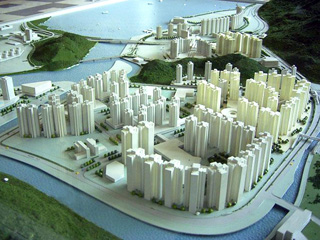
|
|
Shankland Cox was appointed as part of a
consortium to undertake studies for the development
of a new town in proximity to the new airport. The
principal strategic objectives were to plan an airport
support community, to ensure it was provided with
adequate road links and to provide facilities to meet
territory wide housing needs.
The Study produced an Outline Development
Plan together with detailed Layout Plans for the
work required within Tung Chung Area. The Study
took account of the development constraints in
terms of topography and existing village when
creating a detailed development programme
for implementation. Financial implications of
the development were also assessed including
development packages, cost and government
expenditure forecasts. |
Junk Bay New Town Urban Development
Client: Junk Bay Development Office, Govt. of Hong Kong
|
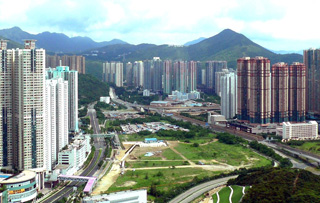
|
|
Shankland Cox provided planning
services including master planning and
urban design inputs to a consortium of
consultants, including engineers and
landscape architects, engaged by the
Government of Hong Kong to prepare
an Outline Development Plan for Junk
Bay New Town.
The studies showed that it would be
feasible to build a new town for a
population of 300,000 in Junk Bay and to
create an attractive urban environment
in which to live and work. The main road
access to the town would be from East
Kowloon via a new road link passing
through a tunnel. Public transport would
be provided by an extension of the mass
transit railway from Kwun Tong. One
of the major determinants influencing
the form and layout of the town was the
inclusion of the mass transit railway. The
location of the main residential areas,
district and commercial centres relate to
the alignment of the mass transit railway
and its stations. |
Port Said Master Plan, Egypt
Client: Ministry of Housing, Government of Egypt
|

|
|
Shankland Cox was commissioned to
undertake studies of the Port Said area
with the view to prepare a Master Plan
for the long term development of the city.
The broad objectives of the studies
were twofold: Firstly, to prepare a short
term programme to overcome the
immediate problems of overcrowded
housing conditions, the inadequacy of
the engineering services, the scarcity of
job opportunities and the lack of social
and community services. Secondly, to
prepare a dynamic planning framework
for the growth of the Port Said area to a
population of some 1,000,000 people,
with a proper balance between living
standards, job opportunities and social
and community facilities.
The Master plan provides an economic
and physical framework for long term
development in the context of the
Canal Zone and the Eastern Delta. The
economic studies set out the potential
for successful economic growth. |
Subiya New City, Kuwait
Client: National Housing Authority
|
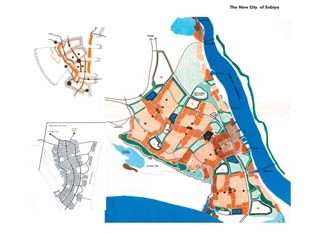
|
|
The Kuwait Master Plan predicted that
there would be a need for new urban
areas to accommodate an additional
population of one million outside of the
metropolitan urban area.
One of the proposals to address the
increase in population recommended
a new city located in the north of
Kuwait. Shankland Cox in association
with local consultants was appointed
by the National Housing Authority to
undertake planning and design studies
for the development of the new city. The
Subiya Peninsula projecting into the
waters of Kuwait bay was selected as
the recommended site for the new city
on a designated area of 20,000 hectares.
The urban planning study assessed
the requirements for a new city of up to
500,000 people along with proposals for
staged growth.
|
Kowloon Density Study, Hong Kong
Client: Planning Department
|
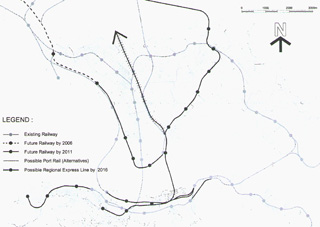
|
|
Shankland Cox was commissioned to
undertake a study of the redevelopment
potential of Kowloon following the
relocation of the airport from Kai Tak and
to assess the implications of development
parameters in terms of building height
and density. The plan also identified
the areas where concerted action was
required to improve residential housing
stock and environment by government
and other agencies including the private
sector.
|
|








